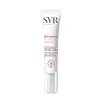What's inside
What's inside
 Key Ingredients
Key Ingredients

 Benefits
Benefits

 Concerns
Concerns

 Ingredients Side-by-side
Ingredients Side-by-side

Water
Skin ConditioningPropanediol
SolventHydrogenated Polydecene
EmollientCyclopentasiloxane
EmollientOrbignya Oleifera Seed Oil
EmollientPolyacrylamide
Behenyl Alcohol
EmollientCaprylic/Capric Triglyceride
MaskingDipotassium Glycyrrhizate
HumectantSaccharide Isomerate
HumectantSodium Hyaluronate
HumectantTocopheryl Acetate
Antioxidant1,2-Hexanediol
Skin ConditioningC13-14 Isoparaffin
EmollientCaprylyl Glycol
EmollientCeteareth-20
CleansingCitric Acid
BufferingGossypium Herbaceum Seed Oil
Skin ConditioningLaureth-7
EmulsifyingPentylene Glycol
Skin ConditioningSodium Citrate
BufferingSodium Polyacrylate Starch
AbsorbentWater, Propanediol, Hydrogenated Polydecene, Cyclopentasiloxane, Orbignya Oleifera Seed Oil, Polyacrylamide, Behenyl Alcohol, Caprylic/Capric Triglyceride, Dipotassium Glycyrrhizate, Saccharide Isomerate, Sodium Hyaluronate, Tocopheryl Acetate, 1,2-Hexanediol, C13-14 Isoparaffin, Caprylyl Glycol, Ceteareth-20, Citric Acid, Gossypium Herbaceum Seed Oil, Laureth-7, Pentylene Glycol, Sodium Citrate, Sodium Polyacrylate Starch
Water
Skin ConditioningButyrospermum Parkii Butter
Skin ConditioningCaprylic/Capric Triglyceride
MaskingTribehenin PEG-20 Esters
EmollientGlycerin
HumectantSqualane
EmollientAmmonium Acryloyldimethyltaurate/Vp Copolymer
Hydrogenated Polydecene
EmollientMethylpropanediol
SolventPalmitamide Mea
Tapioca Starch
Tocopheryl Acetate
AntioxidantXylitol
HumectantCeramide NP
Skin ConditioningCholesterol
EmollientBatyl Alcohol
EmollientDipotassium Glycyrrhizate
HumectantAllantoin
Skin ConditioningArginine
MaskingBisabolol
MaskingCaprylyl Glycol
EmollientDisodium EDTA
O-Cymen-5-Ol
AntimicrobialP-Anisic Acid
MaskingSodium Hyaluronate
HumectantSodium Stearoyl Lactylate
EmulsifyingTocopherol
AntioxidantBHA
AntioxidantTriethyl Citrate
MaskingWater, Butyrospermum Parkii Butter, Caprylic/Capric Triglyceride, Tribehenin PEG-20 Esters, Glycerin, Squalane, Ammonium Acryloyldimethyltaurate/Vp Copolymer, Hydrogenated Polydecene, Methylpropanediol, Palmitamide Mea, Tapioca Starch, Tocopheryl Acetate, Xylitol, Ceramide NP, Cholesterol, Batyl Alcohol, Dipotassium Glycyrrhizate, Allantoin, Arginine, Bisabolol, Caprylyl Glycol, Disodium EDTA, O-Cymen-5-Ol, P-Anisic Acid, Sodium Hyaluronate, Sodium Stearoyl Lactylate, Tocopherol, BHA, Triethyl Citrate
 Reviews
Reviews

Ingredients Explained
These ingredients are found in both products.
Ingredients higher up in an ingredient list are typically present in a larger amount.
This ingredient is an emollient, solvent, and texture enhancer. It is considered a skin-softener by helping the skin prevent moisture loss.
It helps thicken a product's formula and makes it easier to spread by dissolving clumping compounds.
Caprylic Triglyceride is made by combining glycerin with coconut oil, forming a clear liquid.
While there is an assumption Caprylic Triglyceride can clog pores due to it being derived from coconut oil, there is no research supporting this.
Learn more about Caprylic/Capric TriglycerideCaprylyl Glycol is a humectant and emollient, meaning it attracts and preserves moisture.
It is a common ingredient in many products, especially those designed to hydrate skin. The primary benefits are retaining moisture, skin softening, and promoting a healthy skin barrier.
Though Caprylyl Glycol is an alcohol derived from fatty acids, it is not the kind that can dry out skin.
This ingredient is also used as a preservative to extend the life of products. It has slight antimicrobial properties.
Learn more about Caprylyl GlycolDipotassium Glycyrrhizate comes from licorice root.
Extracts of licorice have demonstrated to have antibacterial, anti‐inflammatory, antiviral, antioxidant properties.
One component, glabridin, has extra potent antioxidant and soothing properties. It has also been found to block pigmentation from UVB rays in guinea pigs.
Licorice Root also contains a flavonoid. Flavonoids are a natural substance from in plants. Flavonoids also have antioxidant properties.
Another component, glycyrrhizin, has been found to have anti-inflammatory and antimicrobial benefits. This may make licorice root extract effective at treating acne. However, more research is needed to support this.
Liquiritin is one of the flavone compounds found in licorice. It has been found to help lighten skin by preventing tyrosinase from reacting with tyrosine. When the two react, protein is converted to melanin. Melanin is the substance in your body that gives your features pigmentation.
Licorice root is native to Southern Europe and Asia. It has been used in traditional Chinese medicine to help with respiratory issues.
Learn more about Dipotassium GlycyrrhizateHydrogenated Polydecene is an emollient. It creates a non-occlusive film on the skin that offers extra protection for your skin barrier.
The texture of Hydrogenated Polydecene ranges from light and silky to rich.
Hydrogenated Polydecene is the end compound of controlled hydrogenation of Polydecene.
Learn more about Hydrogenated PolydeceneSodium Hyaluronate is hyaluronic acid's salt form. It is commonly derived from the sodium salt of hyaluronic acid.
Like hyaluronic acid, it is great at holding water and acts as a humectant. This makes it a great skin hydrating ingredient.
Sodium Hyaluronate is naturally occurring in our bodies and is mostly found in eye fluid and joints.
These are some other common types of Hyaluronic Acid:
Learn more about Sodium HyaluronateTocopheryl Acetate is AKA Vitamin E. It is an antioxidant and protects your skin from free radicals. Free radicals damage the skin by breaking down collagen.
One study found using Tocopheryl Acetate with Vitamin C decreased the number of sunburned cells.
Tocopheryl Acetate is commonly found in both skincare and dietary supplements.
Learn more about Tocopheryl AcetateWater. It's the most common cosmetic ingredient of all. You'll usually see it at the top of ingredient lists, meaning that it makes up the largest part of the product.
So why is it so popular? Water most often acts as a solvent - this means that it helps dissolve other ingredients into the formulation.
You'll also recognize water as that liquid we all need to stay alive. If you see this, drink a glass of water. Stay hydrated!
Learn more about Water